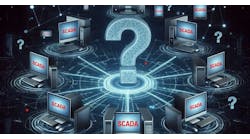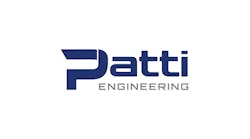User-driven solutions kept rolling in at Inductive Automation's Ignition Community Conference 2016 on Sept. 19-21 in Folsom, Calif. As usual, several hundred of the SCADA software firm's many system integrators, partners and other fans showed up to exchange experiences, success stories and advice, and quiz Inductive's experts on best practices and the new and upcoming capabilities of their Ignition SCADA software.
In his opening address, Steve Hechtmann, president, CEO and founder of Inductive, explained, "Inductive is all about removing friction for our users, and that's why we've revised our four pillars to include new technical, licensing, business and ethical models. This allows the same Ignition source code to reside on everything from a tiny Raspberry Pi computer up to a large enterprise server. Meanwhile, our unlimited licensing gives users $1 million worth of software value for less than $10,000, and our newly released Ignition Version 7.9 has enough features that it can become whatever its users need, whether it's an HMI, historian, dashboard, alarm package, reporting function or vision module."
Hechtmann adds that Inductive is still experiencing double-digit growth each year, and that it's been profitable every quarter since 2010. It's also opened three new international training centers, and recently formed strategic partnerships with Sepasoft and its MES software for tracking and tracing functions, and with Cirrus Link Solutions and its MQTT software modules that help bring Ignition to machines and edge-of-network devices.
Extended by these and other links to new software messaging tools like MQTT and communication strategies like OPC-UA, Inductive's developers and experts report that Ignition's SCADA capabilities are converging IT and operations technology (OT) functions in some applications, and enabling it to participate more effectively in the Industrial Internet of Things (IIoT). In essence, MQTT can serve as a broker between software applications (such as ERP, big data analytics, SCADA and MES) and devices (such as PLCs and intelligent components), and decouple them from their traditionally fixed roles to give users greater flexibility in how to apply them.
"There's an amazing demand for data in large chunks, so we focus on providing timely access to data, and connecting people and processes to improve the value of decisions," said Don Pearson, Inductive's chief strategy officer. "But OT really needs to drive this effort because they know the operations, equipment and environment best, and that's where 90% of this data is presently stranded, whether it's on the plant floor, in the field, or at the edge of the network."
[javascriptSnippet]
In response to the recent emergence of the Industrial Internet of Things (IIoT), Pearson added that Inductive has enabled IIoT-style productivity ever since its software was known as Factory SQL because it also brought the IT and OT sides together. "And we've stayed true to that goal," added Pearson. "OT needs detailed data in milliseconds to keep operations running, while IT needs data daily or weekly add to their ERP systems. We can build the bridge between them, and then get out of the users' way, so they can build the solutions they want."
For example, Pearson reported that Ignition and Cirrus Link's MQTT modules were recently used on a pipeline management project in Canada, where it used to take 15 minutes to see of a valve was open or closed, and now it only takes 15 seconds. "Our job is to help users apply Ignition, so they can avoid the new technology hype curve's 'pit if disillusion,' and create a bridge to the 'plateau of productivity.' "


